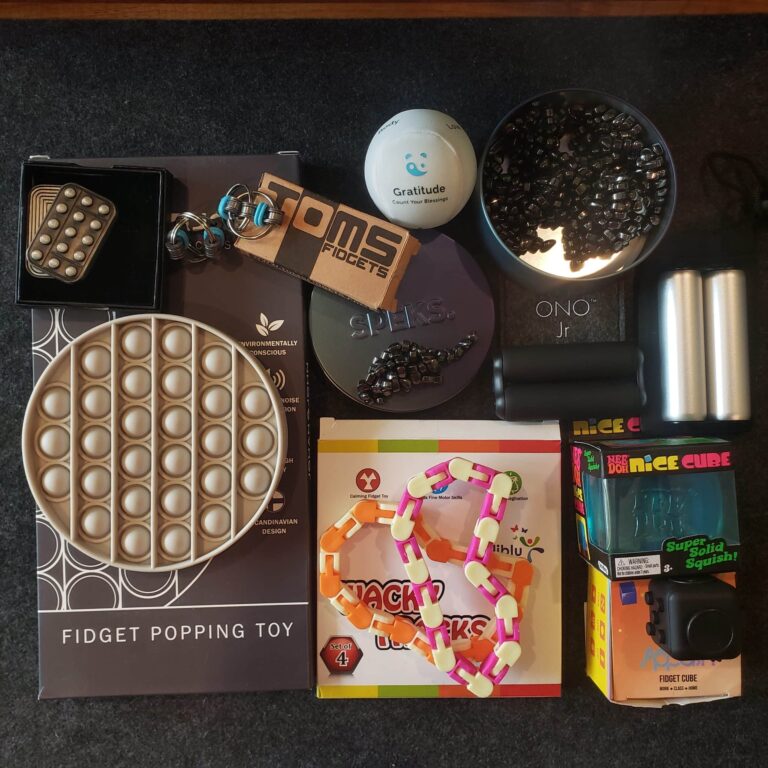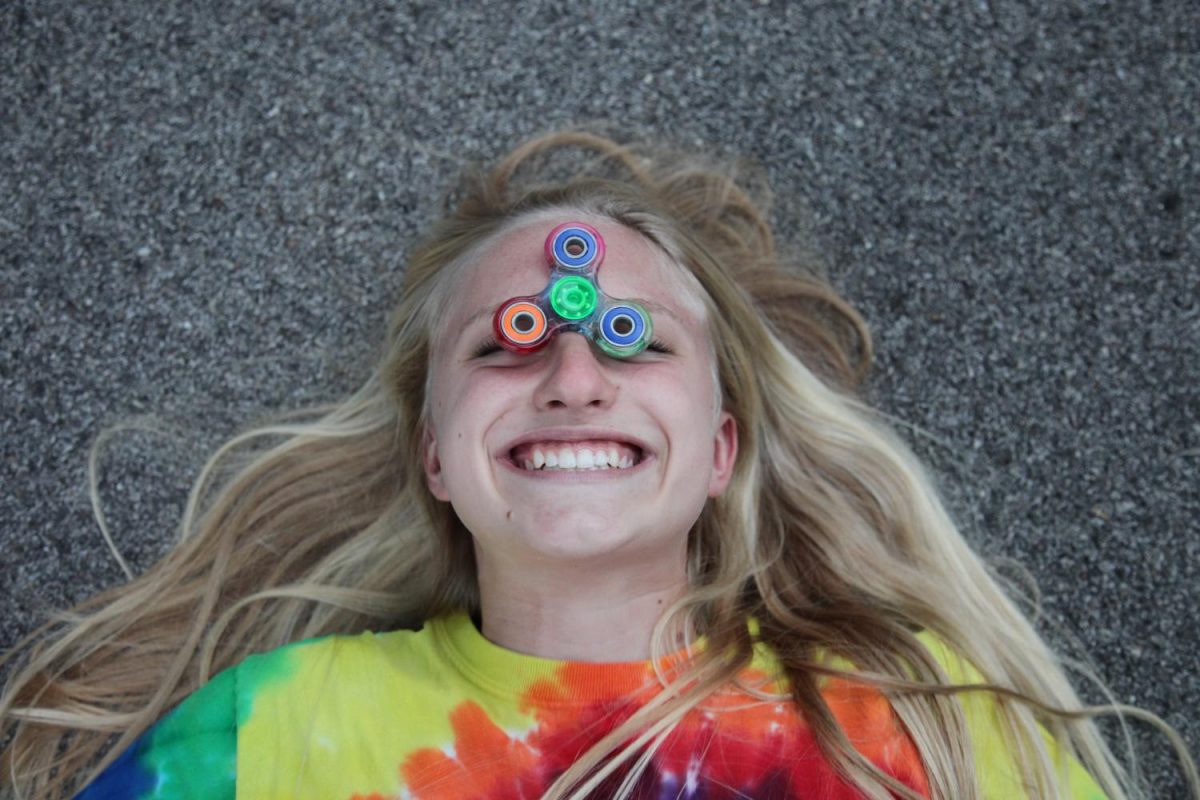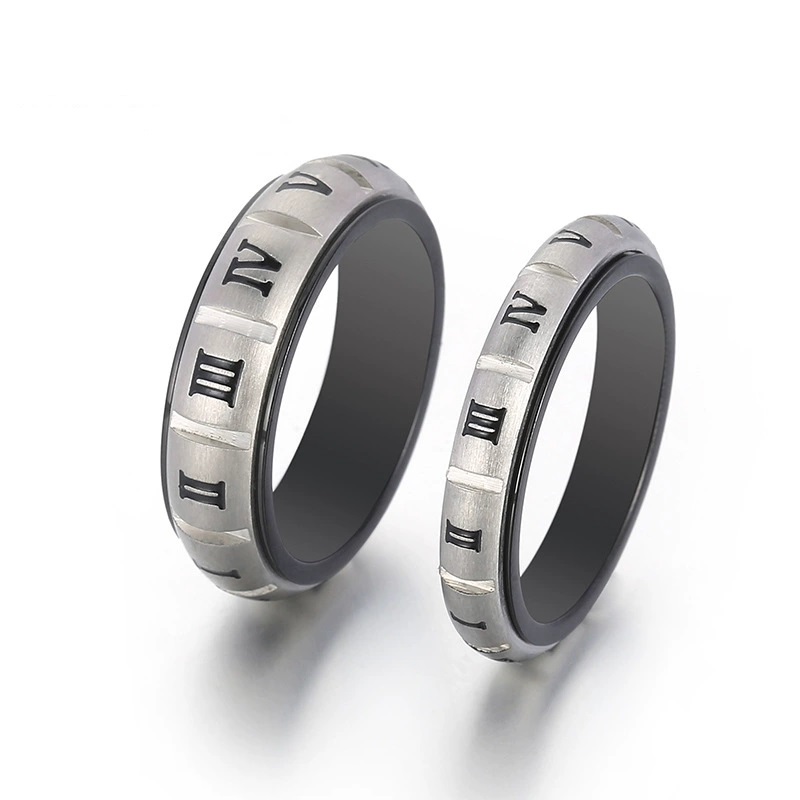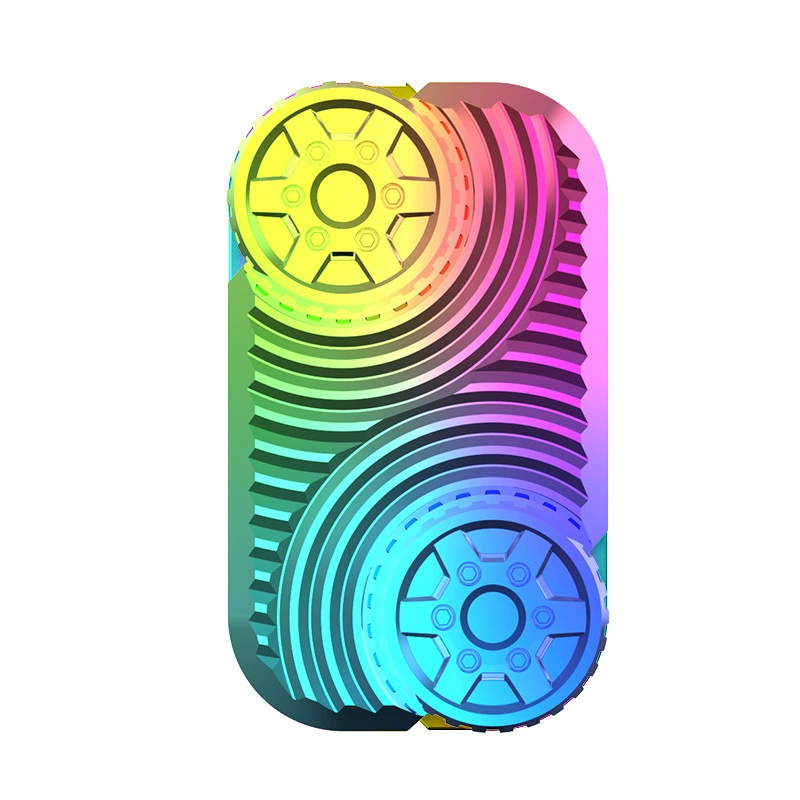-
Shenzhen City, GuangDong Province, China
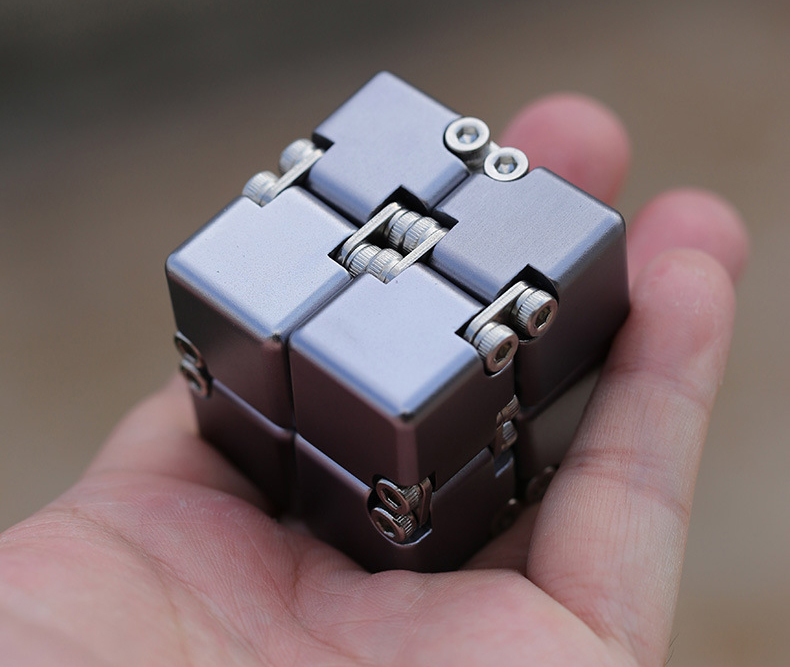
What is a Fidget Toy?
What Is a Fidget Toy? Uses, Types, and Benefits Explained
Table of Contents
What Are Fidget Toys?
Have you seen small toys people hold? They spin them. They click them. They squish them. These are called fidget toys.
Fidget toys are little gadgets. They keep hands busy. They help minds focus. Think of them as focus aids. They are simple stress relief toys.
They are made for tactile stimulation. That means feeling them helps you. Many fidget toys are small. You can hold them in one hand. They are pocket-sized toys. They are easy to carry. These portable fidgets are great anti-anxiety gadgets.
Some people need help to feel calm. Some people need help to pay attention. Fidget toys can help with that. They are anxiety tools. They are concentration aids. They are like bubble wrap simulators you can use again and again. Many are reusable poppers. They offer tactile feedback.
A Little History
Fidget toys seem new. But the idea is old. Catherine Hettinger made a type of fidget spinner long ago, in 1993. She wanted to help kids.
Then, around 2017, the fidget spinner got super popular. You saw them everywhere! Many companies like ZURU and Hasbro started making them.
Later, new toys came out. You might know Pop It toys. These silicone fidgets became stars on TikTok. They are like endless bubble wrap. They are a fun bubble wrap alternative. Now, lots of people use fidget toys. They are not just for kids with ADHD or autism. They are mainstream stress-relief items. People use them for anxiety reduction. They are popular desk accessories.
Why Do People Use Fidget Toys?
People use fidget toys for many reasons. Let’s look at the big ones:
- Less Stress: Feeling stressed? A fidget toy can help. Playing with squishy toys or stress balls can make you feel calm. They are relaxation tools. They help with stress reduction. Some science calls them rapid stress management tools (RSMTs). They take your mind off worries . Using textured toys may even lower stress stuff in your body called cortisol. They are great for anxiety management. Calming devices like these help many people.
- More Focus: Need to think hard? A fidget toy might help you focus. It sounds funny, right? How can a toy help you focus? Think about doodling tools. Doodling can help some people remember things. Fidgeting can work the same way. It keeps a small part of your brain busy. This can free up the rest of your brain to listen or think. They are good focus enhancers. They help with cognitive focus. That’s why they are used as ADHD tools or ADHD focus tools.
- Sensory Needs: Some people feel things differently. Loud noises might feel too loud. Bright lights might feel too bright. This is sometimes called sensory processing disorder. Some people with autism or ADHD have this. Sensory toys can help. Autism sensory tools give the right amount of feeling. Tactile stimulation from fidget toys can help people feel calm and organized. They help with sensory integration. Occupational therapy toys like these are very helpful. Therapy tools like Therapy putty or Kinetic Sand are great examples.
These toys help with fine motor skills too. Using small toys builds hand muscles. This is good for motor skill development and fine motor coordination. They support child development toys.
Top 5 Types of Fidget Toys
There are many kinds of fidget toys. Let’s look at some popular ones. Maybe you have seen fidget bundles with many types.
1. Pop Its:
- What they are: Flat silicone fidgets. They have bubbles you push. They make a little pop sound. Like a bubble popper!
- Why people like them: They feel good to push. Like push-pop bubbles. They are often bright colorful fidgets. Fat Brain Toys makes a popular one called Dimpl. These rubber poppers and plastic poppers are very satisfying silicone bubbles.
2. Fidget Spinners:
- What they are: Toys that spin! They have a center part you hold. They have arms that spin around. Rotating spinners are fun to watch.
- Why people like them: They spin for a long time. Some are very quiet silent fidgets. Some look cool, like this Desk Fidget Spinner. There are even spinner rings you can wear as fidget jewelry.
3. Fidget Cubes:
- What they are: Small cubes with different things on each side. Like buttons, switches, and dials. They are multi-function fidgets.
- Why people like them: Lots to do! You can click, spin, and rub. They have clickable fidgets and switchable buttons. Some have textured cubes. A Fidget Cube Fidget Spinner combines two popular types! These plastic fidgets offer variety. Fidgetland makes some neat ones.
4. Infinity Cubes:
- What they are: Cubes made of smaller blocks. You can fold them over and over. They never seem to end! Many are made of metal. You can find a cool Aluminum Infinity Cube.
- Why people like them: The smooth folding feels nice. They are quiet silent stress relievers. Speks Magnets make popular magnetic versions. These infinity cubes are great desk toys for adults.
5. Tactile Toys:
- What they are: Toys you squish, stretch, or feel. Lots of different kinds!
- Stress balls and squishy toys: You squeeze them. Good squeeze toys. Squishmallows are popular soft ones. These are good stress ball alternatives.
- Textured toys: Have bumps or ridges. Like Tangle toys or Chainmaille Fidgets. Tangle Creations is a known brand.
- Putty and Sand: Like Therapy putty, Kinetic Sand, Play-Doh, or Silly Putty. You can shape them. Good for hand exercisers and hand strengthening. Cra-Z-Art makes similar compounds.
- Stretchy/Bendable: Like Monkey Noodles, Wacky Tracks, or Bendeez. You can bend and twist them.
- Clickers: Make noise, like click-clack toys or plastic clickers.
- Chewable: Special safe-to-chew items like Chewelry or products from Munchables.
- Others: Flipping chains like the Flippy Chain or FlikFlak Chain, Marble Mats, Tactile discs, Bouncy Bands for chairs, SensoryStix, Tiggly Shapes, or even a Rubik’s Cube can be a fidget. The ONO Roller is another unique option. ThinkFun makes many puzzle toys that can work as fidgets. ASMR toys sometimes fall into this group too.
These toys are great for tactile learning. They are fun boredom busters. Many are considered educational fidgets.
Do Fidget Toys Really Work?
This is a big question! Do these stim toys help?
- Good Things: Yes, they can help many people. Science shows tactile stimulation might lower stress [^4]. They can give sensory input people need. They can act as concentration aids. Many occupational therapists use them. They are seen as helpful therapy tools for ADHD, autism, and anxiety. They offer proven benefits for mindful play and mindful fidgeting. They provide repetitive motion that can be calming.
- Not-So-Good Things: But they are not magic. They don’t work for everyone. Sometimes, they can be too distracting. A noisy toy can bother others. A cool toy might make someone play instead of listen. They have limitations. They cannot replace therapy or medicine. It’s important to choose non-distracting toys, especially quiet classroom tools. Silent classroom aids are best for school.
Who Should Use Fidget Toys?
Lots of people can use fidget toys!
- Kids and Adults with ADHD or Autism: These toys are often recommended by groups like the ADHD Foundation and National Autism Resources. They help manage energy and focus. They are great autism sensory tools and hyperactivity tools. About 73% of kids with sensory needs use them. Sensory Processing Disorder Foundation also recognizes their use.
- People with Anxiety: Fidget toys can be great anxiety tools. They help calm nerves. They provide children’s anxiety relief.
- Students in Class: Classroom fidgets can help some kids learn. But check with the teacher first! Sometimes schools have rules or offer fidget loans. Quiet play is key.
- Adults at Work: Need help focusing during long meetings? Or need office stress relief? Office desk toys can help. About 48% of adults use them for focus . They are good office productivity tools. Many desk doodads can be used for fidgeting. They are helpful work-from-home tools. A nice Kinetic Desk Toy For Adults can look good on a desk.
- Anyone! Feeling restless? Bored? A fidget toy can be a simple solution. They are good restless hand solutions. They can even be creativity boosters during brain breaks.
How to Pick a Good Fidget Toy? (Buying Guide)
Want to buy fidget toys online or in a store? Here are tips:
- Think About Who: Is it for a child? An adult? For home, school, or work?
- Think About Why: Is it for stress? Focus? Sensory input?
- Material: Silicone fidgets are often soft and durable. Metal ones like infinity cubes can last long. Avoid cheap plastic fidgets that break easily.
- Noise Level: Need a silent fidget for class or work? Or is a little click okay? Look for quiet classroom tools if needed.
- Size: Does it need to be a pocket-sized toy? Or is a bigger desk toy okay? Portable fidgets are easy to take anywhere.
- Feeling (Texture): Do you like smooth? Bumpy? Squishy? Clicky? There are many textured toys.
- Safety: For young kids, avoid small parts they could swallow. Look for non-toxic materials, especially for Chewelry.
- Where to Buy: Stores like Fat Brain Toys or Tangle Creations have good options. Online shops like BuyFidget.Toys, Therapy Shoppe, or StressLess Planet specialize in them. You can often find fidget bundles. Some cool gadgets are the Fidget Pad, Fidget Drum, or Fidget Widget from Click N’ Play.
Questions People Ask (FAQs)
Are fidget toys safe for toddlers?
Choose carefully. Avoid small parts. Look for toys made for young children. Big, soft squishy toys might be okay.
Can fidget toys replace therapy or medicine?
No. They are tools to help manage things like stress or focus. They are helpful therapy tools but do not replace help from doctors or therapists like those at Occupational Therapy Systems. Think of them like getting a Sensory TheraPLAY Box – helpful, but part of a bigger plan.
Do schools ban fidget toys?
Sometimes. If a toy is noisy or distracting, a school might say no. Always ask the teacher. Silent fidgets or discreet fidgets are usually better for school. Educational fidgets might be more welcome.
What’s the difference between a fidget toy and a stim toy?
They are very similar! Stim toys is often used when talking about self-stimulation for people with autism or sensory needs. Fidget toys is a more general term. Both help with self-regulation and the mind-body connection.
Final Thoughts
So, what is a fidget toy? It is a small tool. It can help with big things like stress and focus. It can help hands stay busy so minds can work. They are used as stress relief toys, sensory toys, ADHD tools, and office desk toys.
From the simple fidget spinner (see Wikidata) to Pop It toys, fidget cubes, infinity cubes, and stress balls – there is a fidget for almost everyone. Even things like TheraBand (for exercise) or finger exercisers can be used to fidget.
Remember, they are tools, not magic fixes. Choose one that feels right for you. Use it when you need a little help. A good fidget toy can turn wiggly energy into calm focus. It’s about finding the right restless hand solutions for you or your child.


